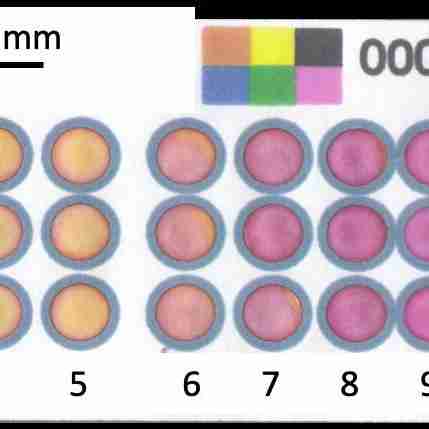Missing Salmon - does their DNA hold the answer? Oct 1, 2019 - Nov 30, 2023
The ability to tag and track individual salmon will uncover where and when salmon are going missing on their journey downstream…. But understanding why they disappear is more difficult. This project will be a collaborative project between the Univers...
Read More about Missing Salmon - does their DNA hold the answer?.
Projects (83)
Understanding the spatial and temporal dynamics of environmental DNA for monitoring and management of priority invasive species Sep 16, 2019 - Jan 31, 2025
Invasive non-native species (INNS) are one of the five global drivers of biodiversity loss and the rate of biological invasions is increasing. Dreissenid mussels (zebra mussels Dreissena polymorpha and quagga mussels D. rostriformis bugensis) are INN...
Read More about Understanding the spatial and temporal dynamics of environmental DNA for monitoring and management of priority invasive species.
RSC COVID-19 Head of Department Grant Jun 1, 2020 - Jul 31, 2024
£10,000 of funding broadly for research enablement and researcher development in the chemical sciences in 2020. It should not replace or reduce institutional or funding agency support for departments.
Heads of Department may allocate this fu...
Read More about RSC COVID-19 Head of Department Grant.
1-2-1 Academically asymmetrical paired mentoring: Improving GCSE science attainment amongst disadvantaged students Jan 1, 2021 - Jul 31, 2022
A previous RCT pilot study (Sharpe, Abrahams & Fotou, 2017) found that academically asymmetrical paired mentoring intervention (the one-to-one pairing of undergraduate STEM students with disadvantaged Year 11 students) had a statistically significant...
Read More about 1-2-1 Academically asymmetrical paired mentoring: Improving GCSE science attainment amongst disadvantaged students.
Understanding ocean Acidification Impacts onChemical Communication in marine species — AcidIC Jan 1, 2022 - Dec 31, 2023
One important part of climate change is ocean acidification (OA) caused by the increase of atmospheric CO2 1, that once dissolved in seawater leads to carbonic acid, which then releases hydrogen ions, lowering the water pH2. Since the industrial revo...
Read More about Understanding ocean Acidification Impacts onChemical Communication in marine species — AcidIC.
IUCN Red List Assessment Nov 30, 2021 - May 2, 2022

Monitoring soil health with field-deployable sensors and workflows suitable for lay-personsACTF summer studentship Jul 1, 2021 - Aug 25, 2021
Successful land management underpins soil health for sustainable agricultural production. However, significant amounts of nutrients are lost every year due to land degradation and poor soil management. To address this, routine monitoring of soil chem...
Read More about Monitoring soil health with field-deployable sensors and workflows suitable for lay-personsACTF summer studentship.
Behaviour of European beavers, Castor fiber, in UK reintroduction trials Apr 1, 2021 - Sep 30, 2022
Resilience of pollinators in a changing world: impact of developmental environment on metabolism and energetic budgets in social and solitary bees Jan 1, 2024 - Dec 31, 2026
Human activity is simultaneously raising temperatures and changing food resources for beneficial animals, threatening global food security. Although food and temperature individually have well understood effects upon animals, their combined effects a...
Read More about Resilience of pollinators in a changing world: impact of developmental environment on metabolism and energetic budgets in social and solitary bees.
National Data Strategy Pilot Funding Oct 1, 2021 - Mar 31, 2022
The missing link: do impacts of beavers traverse aquatic-terrestrial boundaries? Sep 26, 2021 - Oct 31, 2022
Reintroduction of keystone species such as beavers is considered part of the solution to the freshwater biodiversity crisis. A primary motivation for reintroducing beavers is to create heterogeneous habitats that support novel communities of animals...
Read More about The missing link: do impacts of beavers traverse aquatic-terrestrial boundaries?.
Evaluating biodiversity impacts of beaver reintroductions on invertebrate and vertebrate communities using environmental DNA Feb 10, 2022 - Mar 31, 2025
Biodiversity is being lost at an unparalleled rate, particularly in freshwater ecosystems (McLellan et al., 2014). Reintroduction of keystone species such as beavers is considered part of the solution to the freshwater biodiversity crisis. Beavers, w...
Read More about Evaluating biodiversity impacts of beaver reintroductions on invertebrate and vertebrate communities using environmental DNA.
Towards enabling sustainable expansion of offshore wind while protecting marine benthic biodiversity and functioning (BEcoWIND) Apr 1, 2023 - Mar 31, 2027
Meeting energy demands in the most sustainable way is a major challenge for society. Offshore wind farms - groupings of wind turbines on submerged sediments - offers part of the solution for the energy transition that is needed to mitigate climate ch...
Read More about Towards enabling sustainable expansion of offshore wind while protecting marine benthic biodiversity and functioning (BEcoWIND).
HEIF: Development of a portable sensor for detection of halogens in fresh water Jan 1, 2022 - Jul 31, 2022
nutrient analysis on Winestead Drain (EA partnership) Jan 25, 2022 - Mar 31, 2022
Analysis sediment core samples nutrient levels, particularly focusing on phosphate levels to understand nutrient sources. Excess phosphates lead to eutrophication, to inform mitigation of this sources of phosphates need to be determined. Historic ph...
Read More about nutrient analysis on Winestead Drain (EA partnership).
Buxton Water sampling Jan 20, 2022 - Mar 31, 2022
Take water quality readings from 50 locations along the River Wye for the Environment Agency
Investigating temporal impacts of reintroduced beavers at Cropton Forest on biodiversity using environmental DNA (eDNA) metabarcoding. Apr 1, 2022 - Oct 1, 2025
Organisms release DNA into the environment via shed cells, waste material or decaying matter. Environmental DNA (eDNA) can then be captured by sampling water, soil, or air, without disturbing wildlife. eDNA metabarcoding is a rapidly emerging techniq...
Read More about Investigating temporal impacts of reintroduced beavers at Cropton Forest on biodiversity using environmental DNA (eDNA) metabarcoding..
